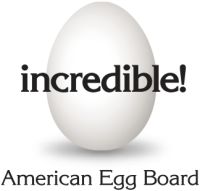
 The American Egg Board (AEB) is circulating Nielsen retail sales data as a service to the industry. The report reflected 52-week rolling sales and consumption of eggs and egg products for the week ending November 6th 2021. Nielsen data captures retail volume and sales value of shell eggs, consumer-packed liquid and hard-boiled peeled eggs. Data is derived from supermarkets, groceries, dollar outlets, drug and convenience stores all with annual sales in excess of $2 million. Some club warehouses provide data but Costco is excluded.
The American Egg Board (AEB) is circulating Nielsen retail sales data as a service to the industry. The report reflected 52-week rolling sales and consumption of eggs and egg products for the week ending November 6th 2021. Nielsen data captures retail volume and sales value of shell eggs, consumer-packed liquid and hard-boiled peeled eggs. Data is derived from supermarkets, groceries, dollar outlets, drug and convenience stores all with annual sales in excess of $2 million. Some club warehouses provide data but Costco is excluded.
The data assembled by Nielsen and distributed by the AEB for the past 52-weeks to November 6th documented sales of 3.16 billion dozen egg-equivalents over the 52-week period. This represents 39.3 percent of projected and updated calendar 2021 egg production totaling 8.05 billion dozen or the capture of approximately 56 percent of the shell-egg segment of the industry currently estimated at 70 percent of all U.S. egg production.
- For the 52-week period, retail sales of all shell-egg categories (shell, consumer liquid, hard boiled and peeled) expressed as egg-equivalents decreased by 6.2 percent from the corresponding previous 52 weeks. Dollar value was 3.7 percent lower to $6,572 million. Projected per capita consumption in 2021 will attain 284.0 eggs representing a 0.9 percent decline from the 2020 period as a result of COVID restrictions. Direct comparisons between 2020 and 2021 are distorted by the late March and April 2020 panic buying in response to COVID.
- On a rolling 52-week basis, the volume captured by Nielsen comprising retail shell-egg sales attained 3.16 billion egg-equivalent dozens. Egg alternatives including liquid, frozen and powdered egg products converted to equivalent dozens attained 94.5 million, a 6.4 percent increase over the previous 52-week period and an 4.7 percent increase in value to $305.0 million. Rolling 52-week hard-boiled peeled egg sales attained 32.3 million dozen, amounting to a 13.7 percent increase in volume and a disproportionate 3.7 percent decline in value indicating lower unit prices.
- In classifying retail sales by product segment, conventional (caged) eggs represented 81.1 percent and cage-free 11.1 percent. Free-range and pastured combined amounted to 7.7 percent. This figure is however based on loose and inconsistent definitions of these categories of housing. Rolling 52-week conventional (non-organic) egg sales decreased 9.6 percent in volume and 7.2 percent in value.
- With respect to volume of other than generic shell eggs, 52-week rolling branded egg sales comprised 29.0 percent of retail sales compared to 71.1 percent for private label. Branded eggs generated 42.3 percent of dollar value compared to private label at 57.7 percent. Branded eggs declined by 9.8 percent in volume and 5.9 percent in value.
- In analyzing retail channels for shell eggs, 52-week rolling values compared to the previous period in 2020 documented that supermarkets and groceries decreased by 10.7 percent, drugstores lower by 25.1 percent, convenience stores were down by 7.6 percent and the combination of club stores and dollar stores (excluding Costco- an important deletion given their volume) decreased by 6.3 percent presumably with the largest contribution from big-box club stores other than Costco.
In reviewing November 2021 USDA data there are 76.9 million hens in barns and aviary houses producing cage-free eggs, in addition to 17.4 million non-caged hens under the Certified Organic program in aviaries, barns and extensive (actual free-range and pasture) housing. The complement of cage-free hens represents 29.5 percent of an assumed population of 225 million hens in the shell-egg segment of production. If USDA data on hens under cage-free housing (aviaries and barns) are accurate and accepting the Nielsen data indicating a sales proportion of 18.8 percent for eggs derived from non-caged flocks, more than half of cage-free eggs are down-marketed to conventional brown and white shelled product. If the Nielsen data is accurate the situation with Certified Organic is assumed to be even more extreme with 7.7 percent of 225 million hens producing under the category as of November 2021 but representing 2.9 percent of shell egg sales for the rolling year to November 6th. The differences between potential production and recorded sales cannot be ascribed to the use of cage-free and organic eggs in egg liquids. The nominal (pre-COVID) complement of hens producing eggs for the breaking segment is estimated at 105 million, predominantly as generics.